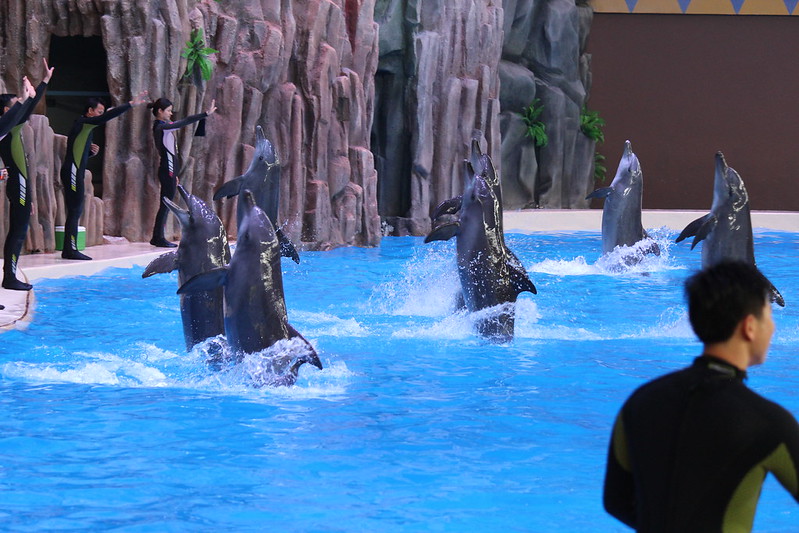Dolphins mourn the loss of loved ones, yet families are being torn apart for entertainment
27 March 2019

If there is a lesson the world needs to learn this Dolphin Awareness Month, it’s that tearing dolphins away from wild communities is far too high a price for entertainment.
Dolphins are highly social, intelligent animals. Group structures are open, with individuals free to move between social groups, but individual group members establish strong social bonds which often last throughout their lifetime.
Calves typically stay with their mothers for three to six years and may stay close to their mothers after they reach adulthood. Females have been observed returning to their mothers or female relatives to raise their own calves, creating multi-generational groups.
Decades of behavioural research has revealed that dolphins have large, complex brains, capable of sophisticated behaviour. They demonstrate cultural transition, tool-use, individuality, consciousness and self-awareness.
They also have complex and flexible communication systems, encompassing vocal, visual, and tactile signals.
Recognising individuals is essential for social animals and dolphins are known to have individual “names”.
Bottlenose dolphins use whistles to recognise each other, and each dolphin develops its own individual signature whistle in its first few months of life, which it uses to broadcast its identity.

Evidence also exists suggesting dolphins grieve for the loss of their family members. Grief is a multifaceted response to loss, particularly to the loss of someone or something that has died, to which a bond or affection was formed.
As well as being an emotional response to loss, grief also has physical, cognitive, behavioural, social, and philosophical dimensions. For a behaviour to qualify as grief, surviving individuals who knew the deceased must alter their behavioural routine. They might eat or sleep less, act listless, or agitated. They might attend their friend’s corpse.
Observations of dolphins have demonstrated nurturant behavior toward their dead offspring. Behavior like supporting dead calves at the surface has been documented in several dolphin species, including bottlenose dolphins, long-beaked common dolphins, and Atlantic spotted dolphins.
On January 29, 2019, a deceased dolphin calf was spotted in the Bay of Islands, New Zealand. The calf, thought to be stillborn, surfaced and sank gently through the water, carried on the back of its mother. The dolphin was observed carrying the tiny body for days, vocalising throughout her loss.
This tragic scene is reminiscent of Tahlequah, a critically endangered southern resident orca, who lost her calf. For 1,000 miles, Tahlequah grieved – while her baby decomposed. Born on July 24, 2018, the calf only lived about 30 minutes before she perished. For 17 straight days, her mother carried the little body with assistance from members of the pod.

Reports like these go back years. On 16 March 1986, near Rockport, Texas fishermen observed an adult dolphin that appeared to be trying to keep a calf from washing ashore on an inshore island. Several other adult dolphins were moving in a clockwise direction around the presumed mother and calf. When the fishermen attempted to approach the group, the circling dolphins began tail-slapping. The calf was obviously dead, bloated with its mouth open.
Attention and supportive behavior toward dead offspring has also been observed in other toothed whales, sea otters, harbour seals, monkeys, apes, and elephants. These are behaviours recognisable as grief in humans and perhaps should not be surprising in species which live in communities of related individuals and friends across many generations, just as humans do.
Tragically, many dolphin communities are broken up, not through sickness or tragedy, but by human intervention.
Each year, hundreds of young dolphins are ripped from their family groups in the wild to supply ocean parks around the world. Dolphins that are not deemed “attractive enough” (those with nicks, scratches or notched fins) to be sold to ocean parks are often brutally slaughtered for human consumption.
Those that survive are denied the ability to socialise with family members. They must adapt to an artificial diet and habitat, excessive noise, the proximity of people and unknown animals, and strive to deal with the adverse impacts of swimming within chemically treated waters.
Many are forced to perform meaningless tricks for entertainment. Many suffer from the stress of confinement, often resulting in increased aggression, illness and premature death.
For wide-ranging, social animals with diverse physical, social, behavioural and psychological needs, ocean parks are an awful fate. If subjecting a dolphin to a lifetime of suffering is the price of such entertainment, then we should all have the moral fortitude to say it is a price that is too high.
BACK




